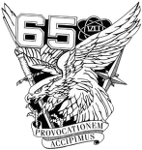 |
U.S. Air Force AcademyClass of 1965 |
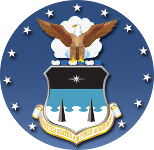 |
 |
U.S. Air Force AcademyClass of 1965 |
 |
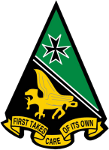 |
 |
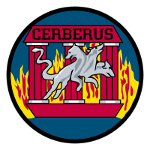 |
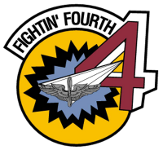 |
| CS-01 | CS-02 | CS-03 | CS-04 |
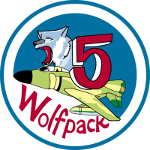 |
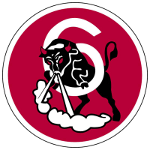 |
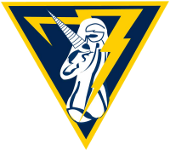 |
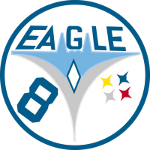 |
| CS-05 | CS-06 | CS-07 | CS-08 |
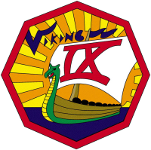 |
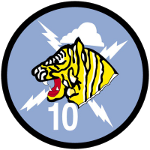 |
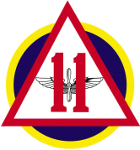 |
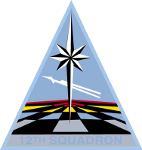 |
| CS-09 | CS-10 | CS-11 | CS-12 |
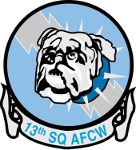 |
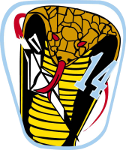 |
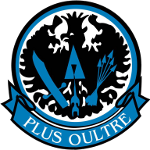 |
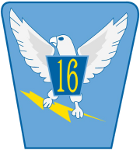 |
| CS-13 | CS-14 | CS-15 | CS-16 |
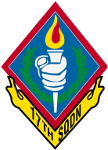 |
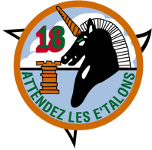 |
 |
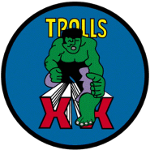 |
| CS-17 | CS-18 | CS-19 | CS-20 |
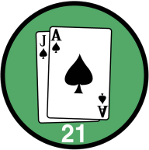 |
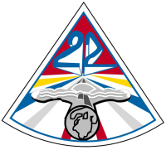 |
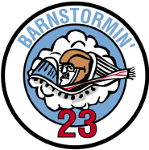 |
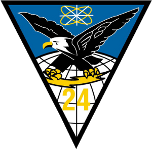 |
| CS-21 | CS-22 | CS-23 | CS-24 |
The emblem in the shape of a spearhead and bordered in black, has two colored fields, the upper green and the lower black. A black diagonal strip edged in white separates the fields. A black Maltese cross trimmed in white is on the green field and a gold griffin is on the black field. "First Takes Care of its Own" is written in black letters on a gold scroll beneath the black field.
The griffin, a creature in Greek mythology, seeks hidden treasure while protecting its own treasure from intruders. The griffin symbolizes the search for the treasure from intruders. The griffin symbolizes the search for the treasure of knowledge in areas yet unknown and unexplored. The Maltese Cross, awarded to the bravest and most courageous military men, indicates a devotion to duty and a dedication to success. The cross, positioned above the black diagonal strip, indicates a higher ideal in life to which one should strive.
The emblem is fashioned after the famous 1st Fighter Wing, the original squadron sponsor. The colors green, gold and black, the Maltese Cross and the diagonal strip are similar to the 1st Fighter Wing emblem.
This is the original Cadet Squadron One patch.
—USAFA Web Site
The patch is a large circular emblem with a thin silver border. A banner inscribed with the word "DEUCE" sits on top of the circle. From a white contrail on a black field emerges the Roman numeral II. A red and blue contrail, produced by two jet aircraft frame the white contrail.
The red, white and blue contrails represents the colors of the American flag. The "II" identifies the Second Cadet Squadron. The black background signifies the vastness of space. The planes originating from the top of the field denote humanity's conquest of space. The three contrails represent the three areas in which all cadets strive to excel: Military, academics, and athletics.
This patch, designed and first used by the Second Cadet Squadron in 1972, is the third patch worn by its members.
—USAFA Web Site
Circular in design, this royal blue patch is edged with a black border. The prominent feature is a lunging, silver, three-headed dog. Behind the dog are three red columns resting on a red pedestal. Across the tops of the columns is a red lintel bearing the word "Cerberus." Silver bands edge the base and the top of each of the three columns. Behind the columns is a yellow fire accented with red.
Cerberus is the gods' three-headed watchdog with the tail of a dragon or a serpent; the three heads symbolize the qualities of loyalty, obedience and fearlessness. The Roman numeral III links the squadron's number and heritage to one of the greatest professional armies of all time. It also represents the gate that Cerberus guards. Fire, traditionally a symbol of eternity, represents the eternal and undying nature of the ideals of the Third Squadron.
The "Cerberus Three" patch replaced the original Third Squadron patch in 1977.
—USAFA Web Site
The patch, a basic circle, has large red "4" on its right side with white, three-dimensional backing. A white contrail, originating from infinity, passes through the center of the "4" and emanates from a pair of silver prop and wings. A light blue starburst sits behind the prop and wings, and a white rectangle with the words "Fightin' Fourth" in black curves across the top of the patch.
"Fightin' Fourth" is the motto of the Fourth Cadet Squadron. The bold printing symbolizes the pride and polished attitude of each squadron member. The prop and wings sysmbolize an upperclass cadet. Gold, blue, silver, and red represent the four class colors at the Air Force Academy.
This original patch is a symbol to all Fourth Squadron graduates of the squadron's winning tradition. The motto "Fightin' Fourth" was given to the squadron in recognition of the squadron's defense of the falcons against mascot thieves at Lowry Air Force Base, Colo.
—USAFA Web Site
The patch is a white circle bordered in blue. A blue semicircular field, placed at an angle on the upper half of the patch, shows a camouflaged F-4 Phantom jet. A snarling gray wolf's head rests on the cockpit of the aircraft, and a red numeral "5" is located on the fuselage to the right of the wolf. "Wolfpack" is written on the white field below the aircraft.
The patch signifies the squadron's association with the famous "Wolfpack" Fighter wing, led in Southeast Asia by Brigadier General Robin Olds; the fierceness, professionalism, and dedication to duty demonstrated by the wing is emulated by the Fifth Squadron Cadets. The F-4 and the wolf indicate the cunning and tenacity used by General Olds's forces and the high degree of spirit they demonstrated.
This is the second patch in the squadron's history. Design by James Bisher, class of 1978, it was approved in January 1976.
—USAFA Web Site
The bright red patch, a circle bordered in white, shows a large, boldly printed white "6_ located in the center. A ferocious black bull, snorting a white cloud, leaps through the circular opening at the bottom of the six.
The huge black bull, the Sixth Squadron's mascot symbolizes strength, courage, determination, perseverance and tenacity. The bright red background adds to the glory of the bull.
This is the original squadron patch.
—USAFA Web Site
The patch is a royal blue equilateral triangle, bordered in gold, standing on its vertex. A white unicorn, its features outlined in blue, stands in the center. A golden lightning bolt overlaps the unicorn and forms the shape of a large seven.
The large and powerful unicorn signifies strength. This mythological animal was virtually invincible in battle. The blue field behind the unicorn stands for fidelity and relates the Seventh Squadron to the Air Force. The gold border stands for valor and its golden rewards. The seven, shaped from a lightning bolt, symbolizes the speed with which the Air Force strikes in battle.
This is the original squadron patch.
—USAFA Web Site
The patch, a large white circle bordered in dark blue, shows a multicolored F-15 Eagle in its center. "EAGLE" is printed in dark blue across the top of the aircraft. A dark blue "8" is at the bottom. Four stars colored gold, blue, silver, and red sit on the right-hand side of the emblem.
The Eighth Squadron chose the F-15 for its emblem for two reasons: The F-15 was the newest interceptor in the Air Force inventory, and the words eagle and eight begin with the same letter. The ghost gray color, along with the plane's leading edge, is the color used by the Air Force Aggressor squadrons. The four colored stars represent the four classes at the academy. The patch symbolizes Eighth Squadron's aggressiveness in intercepting and destroying its enemies.
This fourth patch worn by the squadron was approved in July 1975.
—USAFA Web Site
The patch is an octagonal-shaped emblem. Within it, a Viking ship sails away on a bright orange-rayed sun in the background. A royal blue flag flies from a mast stretching upward from the deck of the ship. "VIKING," printed in royal blue, is to the left of the flag. A large white sail, bordered in black, billows from the mast. The Roman numeral "IX" is centered on the sail. The keep of the ship has the design of a green dragon.
The "IX" represents the Ninth Cadet Squadron. The dragon symbolizes the power and tenacity that characterized the Vikings, early explorers of the vast seas. The Vikings often sought adventure and were courageous in their exploration of uncharted lands around the globe.
This third patch in the squadron's history was approved for wear in January 1978.
—USAFA Web Site
The patch is a circle of sky blue bordered in black. It shows the head of snarling tiger at its center. Four white lightning bolts spring from the tiger's head. A white cloud sits immediately above the tiger's head, and a white Arabic numeral "10" is a the bottom of the patch.
The tiger, the supreme symbol of tenacity and aggressiveness, was chosen by the 10th Squadron to symbolize the tradition of the Flying Tigers of World War II. The lightning bolts and cloud symbolize power and the horizons open to members of the squadron.
This is the original squadron patch. There may be a distinct color variation--a dark blue background--on one version.
—USAFA Web Site
The patch consists of a white equilateral triangle, bordered in red, superimposed on a circular blue field. A red Arabic numeral "11" sits on silver prop and wings at the center.
The triangle superimposed upon the circle is borrowed from the 6th Bomb Wing, the original squadron sponsor. The triangle represents the Greek letter delta to remind all wearers that each new group of fourth classmen was assigned to Delta Squadron during basic cadet training. The three segments of the circle represent academics, athletics and military training. The silver prop and wings symbolize the cadet wing, while the large "11" identified the 11th Cadet Squadron. The emblem bears the squadron's red and white colors; the gold, blue, silver and red class colors; and the cadet wing's blue and silver colors.
This is the original squadron patch.
—USAFA Web Site
The patch, an isosceles triangle of sky blue bordered in blue, is dominated by a black and white Polaris star. Behind the star, a jet plane takes off into the blue skies. The airfield below is a checkered design with black and silver squares in the foreground, blue and black squares in the second row, gold and black squares in the third row, and red and black going on into the distance. Printed in blue across the bottom of the triangle on a silver back is "12th Squadron."
The Polaris provides a never-failing light to guide cadets on their flight through life. It also serves as a reminder that no goal in life is too high to attain. The aircraft in the background signifies the profession cadets have chosen; its position in flight symbolizes the beginning of their mission to defend and protect their country. The four colors represent the four classes. The checkerboard pattern is the traditional symbol of the original squadron sponsors, the 401st Tactical Fighter Wing.
This, the original patch, was designed by William R. Povilus, class of 1963. Color variations of the patch may exist.
—USAFA Web Site
The patch has a bulldog emblazoned in the foreground of a sky blue circle outlined in black. A lightning bolt shoots across the sky behind the silver bulldog, outlined in black and wearing a spiked collar. On a white scroll at the bottom of the patch is written "13th SQ AFCW."
The bulldog represents the full circle of qualities that make up an Air Force officer. It epitomizes the moral resolve and dogged pursuit of duty typical to the cadets of the 13th Squadron. The lightning bolt demonstrates the courage and dedication that characterizes all bulldog graduates.
This is the original squadron patch. Early versions of this patch may have a darker blue background. Another possibility is a lighter blue background with a brown bulldog.
—USAFA Web Site
The patch, a rounded white trapezoid with a light blue border, shows the upper body and head of an aroused cobra rising from the lower left to the upper right corner. The snake's head and prominent features, such as the scales on the head, body, tongue and eyes, are outlines in black. Its head is rust and gold; the body and border on the small head flanges are gold; the eyes and tongue are dark red. A simulates advanced manned strategic aircraft circles from right to left behind the cobra's head, crossing in front of the left hood flange and middle of the planed outlines in black. The Arabic numeral "14," in light blue with white shading, sits against the right flange of the cobra.
The cobra was chosen for its lightning speed and ability. The colors represent the four classes. The ever-increasing effectiveness of the Air Force is depicted by showing the aircraft eluding the blinding speed of the cobra. It serves as a reminder to beware of the speed and abilities of one's opponents.
This third patch was adopted by the squadron in August 1971.
—USAFA Web Site
The emblem depicts a black Prussian eagle against a white circle bordered in blue and black. The bird wears a five-pointed black crown with blue highlights and holds a blue sword in its right claw and five blue arrows in its left claw. A diamond-shaped aircraft aimed at the crown is centered on the eagle's chest. A blue ribbon trimmed in black has white letters spelling "PLUS OULTRE" at the bottom.
The eagle symbolizes the tradition of professionalism and excellence exemplified by the Prussian military. The five-pointed crown signifies victory and superiority. The sword and arrows represent the number fifteen and indicate preparedness. The aircraft airmed at the crown speaks of air power. The squadron's motto is "PLUS OULTRE", French for "to the utmost."
The original squadron patch was designed by Joe Hans Robert Wilson, class of 1963.
—USAFA Web Site
The patch, in the shape of a keystone edged in dark blue, consists of a silver and white hawk on a blue background. A gold lightning bolt is clutched in the bird's talons. The hawk's chest bears a small deep blue keystone with the squadron numeral "16" on it.
The hawk, with its outstretched wings, expresses the freedom of flight. The bared talons clutching the lightning bolt exemplify the power that one must possess to maintain one's freedom. This serves as a constant reminder that the Air Force must maintain a high degree of readiness to use force, if necessary, to protect freedom. The blue keystone signifies the knowledge one must possess to remain free.
This original squadron patch was designed in 1963 by David M. Connaughton, class of 1965.
—USAFA Web Site
The patch, a blue diamond-shaped emblem bordered in red, has a banner at its vertex. In the diamond, a clenched silver fist holds a silver torch with a bright orange and red flame. An emerald green wreath encircles both the torch and fist. The solid banner at the bottom contains the inscription "17th Squadron.
The clenched fist signifies power and tenacity. The flaming torch represents the drive for knowledge and truth. The emerald green wreath encircling the fist exemplifies the laurels of athletic achievement. Each of the four class colors is represented to signify the importance of unity of all the classes at the academy.
This is the original squadron patch.
—USAFA Web Site
The patch is a light blue circle bordered in red, superimposed on a black and white equilateral triangle. A large black unicorn with a white mane, red horn and green eye is within the circle. A green Arabic numeral "18" highlighted in red sits to the unicorn's left. A red rook is below the numeral and "ATTENDEZ LES ETALONS" is emblazoned in green across the bottom half of the circle. A large white cumulus cloud stretching across the horizon is located above the line.
The unicorn symbolizes strength, endurance and matchless spirit. The rook represents the academy as a fortress of knowledge. The three points on the triangle signify the three aspects of academy life: Military, academic, and athletic. The clouds show the military and aerospace careers open to graduates of the academy. "Watch for the stallions" is the English translation of the French "ATTENDEZ LES ETALONS."
This is the original squadron patch.
—USAFA Web Site
No official information is available for this squadron patch.
—USAFA Web Site
The patch is a royal blue circle bordered in black. An aggressive, strong troll stands in the middle. The green troll wears black trousers highlighted in violet. He is striding forward, stepping over the bright red three-dimensional Roman numeral "XX." "TROLLS" is inscribed behind the troll.
In Scandinavian folklore trolls were supernatural giants who lived in the mountains. The 20th Squadron's troll, a robust character, symbolizes the aggressiveness and confidence of the squadron. It also symbolizes the desire to succeed while simultaneously maintaining a good attitude and sense of humor. The three- dimensional nature of the Roman numeral and the word "TROLLS" signify enduring spirit. The areas of the patch surrounding the troll contains the four class colors.
This patch (20th Squadron's second) was adopted in 1972.
—USAFA Web Site
The circular patch shows two playing cards, the ace of spades on top of the jack of spades, centered on a green field. The white numerals "21" sit beneath the cards. The patch has a black boarder.
The ace and jack of spades form the winning combination of twenty-one in the card game, Black Jack, thus they note both the squadron's number and nickname. This winning hand symbolizes the ingredients of character necessary to attain success: skill, spirit, ability, and fellowship. The green background represents the combined colors of gold and blue, the colors of the two classes that were involved in the patch's design. This mixture provides the incentive for cooperation between classes.
Grant D. Callin, class of 1963, was the principal designer of the emblem.
—USAFA Web Site
The patch is a triangle with a three-dimensional "22" in the upper part of its red field. A saber with navigator wings on its center and globe on the end of its hilt points toward the center of the field. Eight red, gold, blue and silver rays emanate from the center of the patch.
The emblem's triangle shape compares the squadron's strength and solidarity to one of the sturdiest geometrical shapes--the triangle. The dominate red color symbolizes courage. The saber, with the navigator's badge and globe, represents strength and readiness. The colored light rays, converging to a point on the horizon, signify unity among the four classes of the cadet wing.
This is the squadron's original patch.
—USAFA Web Site
The patch is a circular emblem with a World War I aviator soaring through white clouds in the middle of a sky blue background. The word "BARNSTORMIN'" written in blue, sits at the top of the patch, and the red numeral "23" is at the bottom.
Red, white and blue symbolizes the colors of the American flag. The barnstormer represents the spirit and daring of the men who pioneered American commercial and military aviation.
This, the squadron's third patch, was designed by Ron Lowe, class of 1979.
—USAFA Web Site
The patch depicts an eagle on a blue, inverted triangle with black borders. The black and white eagle, clutching a gold lightning bolt, soars above a white globe. A Polaris star, surrounded by two atomic rings, shines above the eagle. The gold numeral "24" is directly below.
The eagle symbolizes the virtues of strength, courage, and character each cadet strives to attain. The lightning bolt represents the global responsiveness of the Air Force. Polaris acts as a guiding light to cadets in their pursuit of knowledge. The atom symbolizes the predominant role of knowledge and technology in the modern Air Force.
This is the squadron's original patch.
—USAFA Web Site